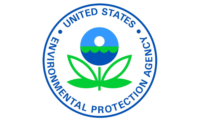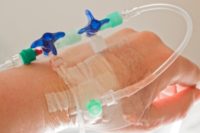 Posted with permission from FairWarning.org:
Posted with permission from FairWarning.org:
Scroll down to read about writer Bridget Huber.
Chemicals used to treat drinking water for millions of Americans may raise the risk of cancer and lead to other unintended health hazards, according to a report released today by the Environmental Working Group, an advocacy organization.
The group is urging the U.S. Environmental Protection Agency to reevaluate its standards for the byproducts created when water is disinfected. The Environmental Working Group also is pushing officials to clean up sources of public drinking water to reduce the need for chemical treatment in the first place.
“By failing to protect source water, Congress, EPA and polluters leave Americans with no choice but to treat it with chemical disinfectants and then consume the residual chemicals generated by the treatment process,” the report says.
Chlorine and other chemicals are added to public drinking water to kill disease-causing bacteria and other microorganisms. But when they come into contact with organic material such as fallen leaves, sewage or livestock manure, reactions occur that create toxic byproducts.
Some of the resulting compounds are regulated, but most are not. “We’re talking about 600 known disinfection byproducts and probably many hundreds more that haven’t been identified,” said Renee Sharp, a senior scientist at the Environmental Working Group and a co-author of the report.
Researchers analyzed results from water quality tests done in 2011 at 201 large municipal water systems that serve more than 100 million people in 43 states. They found trihalomethanes, a byproduct of chlorination, in every system. The EPA calls some members of this class of chemicals “probable human carcinogens” and studies have linked them to bladder cancer, birth defects and miscarriages. However, only one water treatment system exceeded the EPA’s limits for the chemicals, which was set at 80 parts per billion in 1998.
But the report argued that the EPA’s limits are too lax, citing several studies linking even lower levels of the chemicals to health problems. For example, in 2011 a French research team analyzing data from three countries found that men exposed to more than 50 parts per billion of trihalomethanes [try-hal-o-MEH-thanes] had significantly increased cancer risks.
In 2007, Taiwanese researchers found people who drank water with trihalomethane concentrations of more than 21 parts per billion had twice the odds of dying from bladder cancer than those who did not. In 2010, California environmental health regulators proposed a public health goal for trihalomethanes of 0.8 parts per billion — one-hundredth of the federal standard. The goal, which would not be legally binding, is in the process of being finalized.
But David Savitz, a professor of community health at Brown University who has studied the issue, says the chemical byproducts created by disinfection are only of “modest concern.” He faulted the report’s authors for selectively focusing on studies that suggested evidence of harm while ignoring ones that did not. “The general tone of this report is alarmist and exaggerated,” he said.
In response, Sharp said both the EPA and California health officials have concluded that lowering the levels of trihalomethanes in drinking water would cut the number of bladder cancer cases. “We are not the only ones saying this,” she said.
The EPA, which previously has considered lowering the limit for trihalomethanes, declined to comment on the new report. In 2005, it proposed a rule that would have lowered the limit to 40 parts per billion, a move that it calculated would prevent nearly 1,300 cases of bladder cancer and save the U.S. between $2.9 and $7.1 billion annually. Instead of adopting the rule, however, the agency made what the report called “marginal” improvements in its system for measuring compliance with existing regulations. The EPA said these changes will prevent 280 cases of bladder cancer annually.
Analysts also found that levels of trihalomethanes in public water systems vary throughout the year, depending on factors including farming cycles. The EPA, however, regulates the chemicals based on an annual average, which means that spikes in the byproducts may go undetected.
This is of particular concern for pregnant women, said Sharp, since a fetus could be exposed to higher levels of the chemicals during crucial stages in development. “If you are thinking about pregnancy and the possibility for miscarriage or birth defects or stillbirth or any number of pregnancy or reproduction-related effects, then having short-term spikes can really make a difference.”
Health concerns have prompted some public water systems to switch from chlorine to chloramines, compounds made from chlorine and ammonia gases. This substitution, however, may usher in other problems.
For example, Environmental Working Group researchers cited EPA data reporting that drinking water treated with chloramines had the highest levels of an unregulated and potentially highly toxic class of chemicals called idoacids. Chloramine also forms nitrosamine compounds, which are related to chemicals “reasonably anticipated” to be human carcinogens, according to the federal National Toxicology Program.
The Environmental Working Group recommends all people drinking tap water to use carbon filtration systems and released a guide for consumers. Savitz, in contrast, said, “It’s really an individual judgment.”
But Sharp said the real solution is reducing pollution farther upstream. “The answer is truly to have cleaner source water and put more resources into cleaning up source water to begin with.”
Posted in Drinking Water, FairWarning Reports
About FairWarning
FairWarning (www.fairwarning.org) is a nonprofit, online news organization focused on issues of safety, health and government and business accountability.






